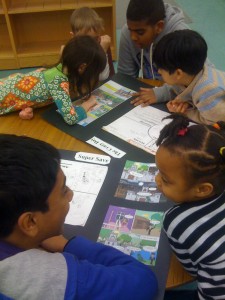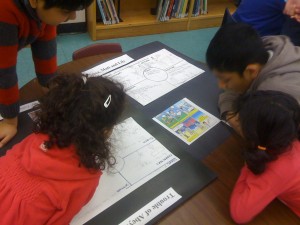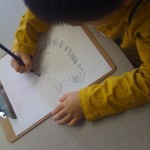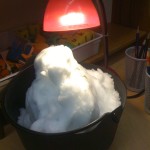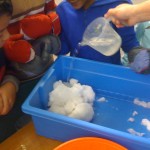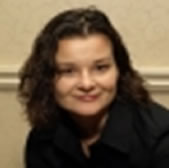 In January, my Kindergarten class began regular weekly meetings with another class in the school. I was new to the school this year, and Reading Buddies were not formally assigned as they are in some schools. The first few months of the school year had been hectic, as I was new to the staff, the FDK program was just being introduced (with wrinkles to smooth out), and the students were adjusting to the demands of a full day of routines and a new environment. As I got to know the staff, I found that I shared a similar teaching style and inquiry approach with the Grade 6 teacher, Mrs. Robinson. In early December I approached her with the idea of bringing our classes together as “Learning Buddies” – an idea that she welcomed. We made our plans to start meeting in January on a weekly basis for a double period.
In January, my Kindergarten class began regular weekly meetings with another class in the school. I was new to the school this year, and Reading Buddies were not formally assigned as they are in some schools. The first few months of the school year had been hectic, as I was new to the staff, the FDK program was just being introduced (with wrinkles to smooth out), and the students were adjusting to the demands of a full day of routines and a new environment. As I got to know the staff, I found that I shared a similar teaching style and inquiry approach with the Grade 6 teacher, Mrs. Robinson. In early December I approached her with the idea of bringing our classes together as “Learning Buddies” – an idea that she welcomed. We made our plans to start meeting in January on a weekly basis for a double period.
The initial meetings were mostly unstructured. It allowed time for the students to get to know one another. Mrs. Robinson and I had previously matched our students based on their needs. I have a few students with communication needs and others with behavioural concerns who would benefit by being matched with empathetic, patient and consistent students from the older class. There were adjustments in the matches that we made, and when students are absent we casually add their partners to another grouping. This relaxed approach makes it easier for the little ones to adjust, and we find the students in the classes are getting to know more than just one student. They tend to team up into small groups now, and we provide opportunities to allow for this development of relationships.
After a few meetings with the students sharing books and getting to know one another, we introduced a project that would integrate language and technology. It included the following:
- brainstorm/create a story with your Learning Buddy
- use the graphic organizer provided to record the topic, setting, characters, problem and solution (Grade 6 students write and Kindergartens can write or draw pictures to represent their ideas)
- use 4 to 8 box organizer to draft story into a comic strip, adding speech bubbles and caption
- create comic in Bitstrips program using laptops provided
- teachers print one page comics in colour and take photos of Learning Buddies
- arrange original plan, completed colour comic strip, and photo of Learning Buddies on bristol board for display
- participate in a Gallery Walk of the completed work

